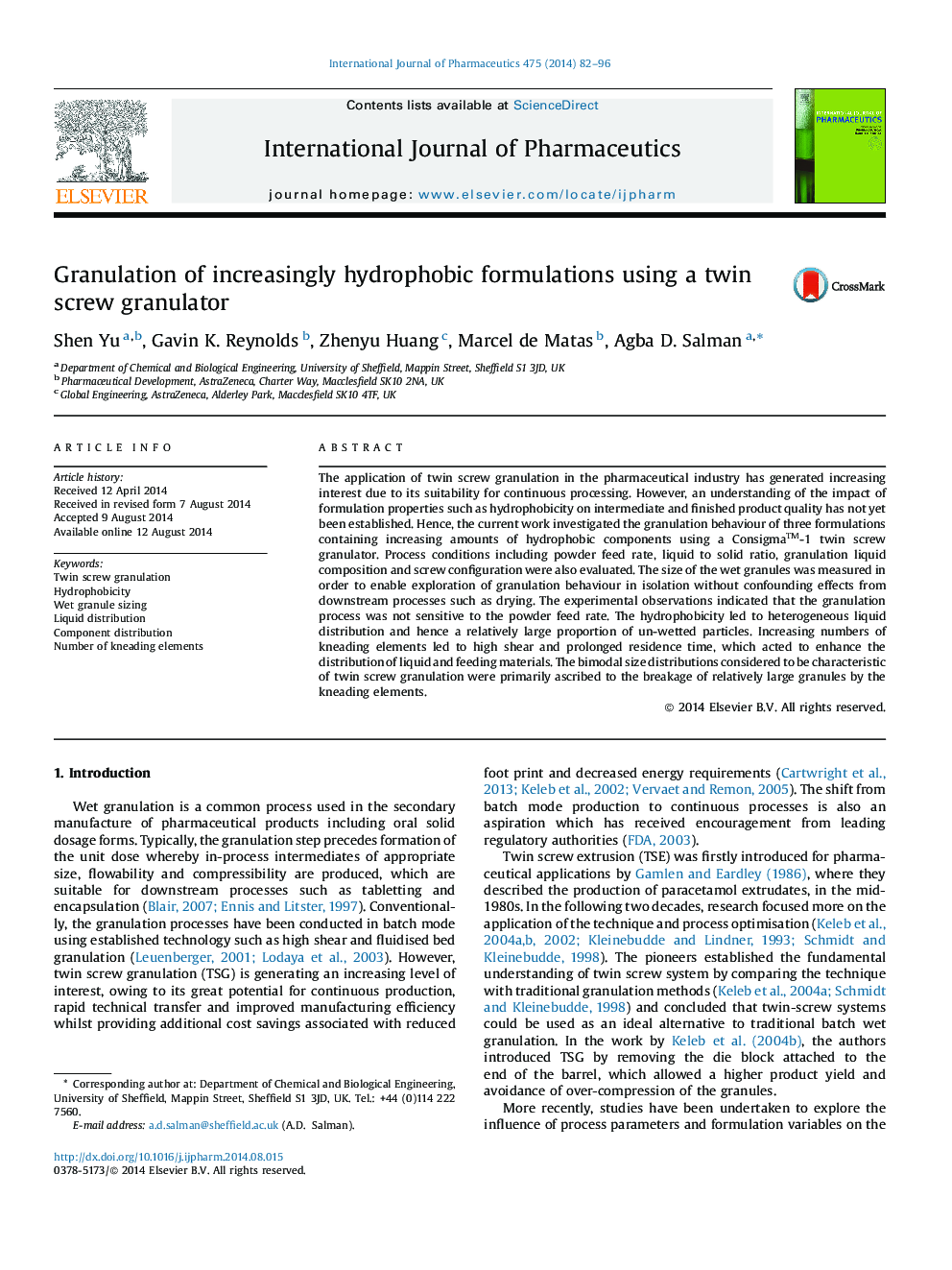| Article ID | Journal | Published Year | Pages | File Type |
|---|---|---|---|---|
| 2501631 | International Journal of Pharmaceutics | 2014 | 15 Pages |
The application of twin screw granulation in the pharmaceutical industry has generated increasing interest due to its suitability for continuous processing. However, an understanding of the impact of formulation properties such as hydrophobicity on intermediate and finished product quality has not yet been established. Hence, the current work investigated the granulation behaviour of three formulations containing increasing amounts of hydrophobic components using a Consigma™-1 twin screw granulator. Process conditions including powder feed rate, liquid to solid ratio, granulation liquid composition and screw configuration were also evaluated. The size of the wet granules was measured in order to enable exploration of granulation behaviour in isolation without confounding effects from downstream processes such as drying. The experimental observations indicated that the granulation process was not sensitive to the powder feed rate. The hydrophobicity led to heterogeneous liquid distribution and hence a relatively large proportion of un-wetted particles. Increasing numbers of kneading elements led to high shear and prolonged residence time, which acted to enhance the distribution of liquid and feeding materials. The bimodal size distributions considered to be characteristic of twin screw granulation were primarily ascribed to the breakage of relatively large granules by the kneading elements.
Graphical abstractFigure optionsDownload full-size imageDownload high-quality image (304 K)Download as PowerPoint slide
